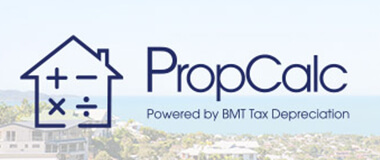A
Aggregated turnover
The income earned from running your business, plus the annual income of any associated businesses.
Australian Taxation Office
The Australian Government’s principal revenue collection agency. It administers the Australian federal taxation system and superannuation legislation. Often referred to as ATO.
Australian Institute of Quantity Surveyors
A professional standards body that ensures practicing Quantity Surveyors maintain the highest level of professionalism. Sometimes referred to as AIQS.
B
Base value
An asset’s cost plus any costs incurred on the asset since first held, less the decline in value of the asset up to the end of the prior year.
C
Capital gains tax
The tax you pay on a capital gain. Often referred to as CGT.
Capital works deduction
A deduction that can be claimed for the depreciation of a building, structural improvements and fixed assets. Also known as Division 43.
Cash flow
The net amount of money an individual or entity receives.
Commercial property
Real estate used for business purposes.
Cosmetic renovation
Generally visual in nature and cheaper than structural renovations. Examples include painting, patching up wall cracks, adding new carpet and replacing door handles.
D
Depreciable asset
An asset expected to decline in value over time, which is eligible for depreciation.
Diminishing value method
One of two methods used to calculate depreciation for plant and equipment assets. The diminishing value method uses the asset’s base value to calculate the decline in an asset’s value.
Division 40
A deduction that can be claimed for the depreciation of assets that are mechanical or easily removed from a property. Also known as plant and equipment depreciation.
Division 43
A deduction that can be claimed for the depreciation of a building, structural improvements and fixed assets. Also known as a capital works deduction.
E
Effective life
The length of time an asset can be used to produce income, as specified by the ATO.
F
Full expensing
A temporary policy that allows businesses with an aggregated turnover of less than $5 billion to deduct the full cost of new eligible depreciating assets.
I
Instant asset write-off
The instant asset write-off allows business owners to claim a full deduction for an asset, up to a certain amount, in the same income year as the asset was purchased.
L
Low-value pool
Low-value pooling allows investors to group qualifying assets in a pool that can be depreciated at an accelerated rate, rather than at each asset’s individual rate. Assets in the low-value pool can be claimed at a rate of 18.75 per cent in the year of purchase, then 37.5 per cent every year following.
M
Medium-size business
An individual, partnership, company or trust with an annual aggregated turnover of $10 million to less than $50 million.
N
Negative gearing
When you’ve borrowed money to buy an investment property and the rental income is less than your interest and expenses.
Neutral gearing
When you’ve borrowed money to buy an investment property and the rental income is the same as your interest and expenses.
P
Plant and equipment
The easily removable fixtures and fittings found within a residential investment or commercial property.
Positive gearing
When you’ve borrowed money to buy an investment property and the rental income is higher than your interest and expenses.
Prime cost method
One of two methods used to calculate depreciation for plant and equipment assets. The prime cost method calculates the decline of an asset’s value as a constant percentage of an asset’s cost and reflect a uniform decline in value over time.
Q
Quantity surveyor
A qualified professional who specialises in building measurement and estimating the value of construction costs. One of only a few professions recognised by the ATO as having the required skills to calculate the cost of items for the purposes of depreciation.
R
Residential investment property
A property purchased with the intention of generating a return through renting out or capital growth (or both).
S
Small business
An individual, partnership, company or trust with an annual aggregated turnover of less than $10 million.
Substantial renovation
Where all, or substantially all, of a building is removed or replaced. This includes removing or replacing foundations, external walls, interior supporting walls, floors, rooves or staircases.
T
Taxable income
The amount of money you pay tax on, usually earned from working or investing.
Tax deduction
A deduction that reduces your taxable income so that you pay less tax.
Tax depreciation schedule
A report that outlines the available tax deductions for the depreciation of a building’s structure and the items within.






